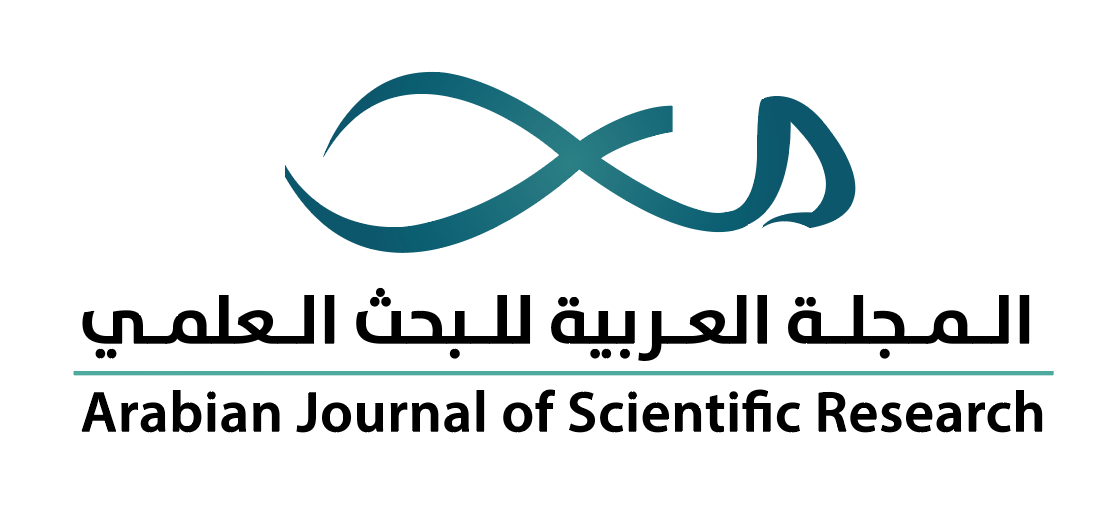-
oa معالجة مادة المرجين بواسطة المبخر الطبيعي بوصفه نموذجًا إيكولوجيا: مثال من تونس
- Source: Arabian Journal of Scientific Research-المجلة العربية للبحث العلمي, Volume 2 (2021), Issue 2, Oct 2021, 13
-
- 22 June 2021
- 21 October 2021
- 07 December 2021
- Previous Article
- Table of Contents
- Next Article
Abstract
الملخص
يعتبر قطاع إنتاج وتصدير زيت الزيتون من القطاعات الواعدة في تونس، حيث يشهد نموًا متواصلًا يواكب التحولات الكبرى، سواء على مستوى الإنتاج أو التحويل أو التصدير. ويأتي مع هذا التطور زيادة في إنتاج مادة المرجين، وهي مادة سائلة مستخلصة من عصر الزيتون تصنف بأنها مادة سامة وملوثٌ بيئي شديد التأثير متى ما صُرّفت في الطبيعة. تهدف هذه الدراسة إلى تصميم وتصنيع نموذج أولي لنظام مغلق للتبخر الطبيعي، يتميز بانخفاض تكلفته وسهولة تشغيله وحاجته إلى الصيانة أقل، له القدرة على تبخير 80٪ من مادة المرجين، وإنتاج 20٪ من المادة الصلبة. وقد أظهر التحليل الفيزيوكيميائي أن الماء المنتج أقل تحميلًا بالمواد العضوية المقيّمة من حيث الطلب على الأكسجين الكيميائي (COD) (1250. ± 10.00 غرام/ لتر) والطلب على الأكسجين البيوكيميائي (BOD) (0.0387 ± 0.0006 غرام/ لتر) مقارنة بتلك الموجودة في مادة المرجين (14333.33 ± 763.76 غرام/ لتر و4683.33 ± 208.17 غرام/ لتر، على التوالي). كما أنه يحتوي على نسبة أقل من المركبات الفينولية عن تلك الموجودة في مادة المرجين (0.012 ± 0.005 مليغرام/ لتر). وأظهرت الدراسة الميكروبيولوجية الغياب التام للكائنات الحية الدقيقة المسببة للأمراض. كما تتميز هذه المياه المجمعة بدرجة حموضة قدرت بـ 3.26 ± 0.092. ونتيجة لذلك، يمكن إعادة استخدام المياه المجمعة لتنظيف وتطهير الأماكن مثل المصانع والمزارع. ولإكمال هذه الدراسة، ثم إعادة تدوير المادة الصلبة (العجينة) المتحصل عليها بعد علاج مادة المرجين عن طريق التصبن.
Tunisia is considered a major cultivator of olive and exporter of olive oil. The Tunisian olive oil activity is constantly developing, given that the country is making great efforts to produce a competitive product in quantity and quality. However, this development generates a large amount of olive mill wastewater, which is a basic by-product extracted from the olives. This wastewater is considered a toxic substance and constitutes a very strong environmental pollutant when it is discharged into the environment. Treating olive mill wastewater by natural evaporation could be a new alternative. Our goal is to design and prototype a closed system for bio-evaporation that is low cost, easy to operate, and requires less maintenance. The system in question can evaporate 80% of the olive-mill wastewater and produces 20% of the solid substance. The physio-chemical analysis showed that this generated water is less loaded with organic matter in terms of COD (0.125 ± 0.001 g/ L) and BOD (0.0387 ± 0.0006 g/L) than that of standard olive-mill wastewater (14333.33 ± 763.76 g/ L and 4683.33 ± 208.17 g/ L, respectively). It also contains a lower concentration of phenolic compounds than those found in olive-mill wastewater (0.012 ± 0.005 mg/ L). The microbiological study showed the complete absence of pathogenic microorganisms. Also, the pH of collected water is around 3.26 ± 0.092. As a result, the collected water can be reused to clean and disinfect places like factories and farms. To complete this study, the solid substance (paste) obtained after treatment of the olive mill wastewater was assessed by saponification.


